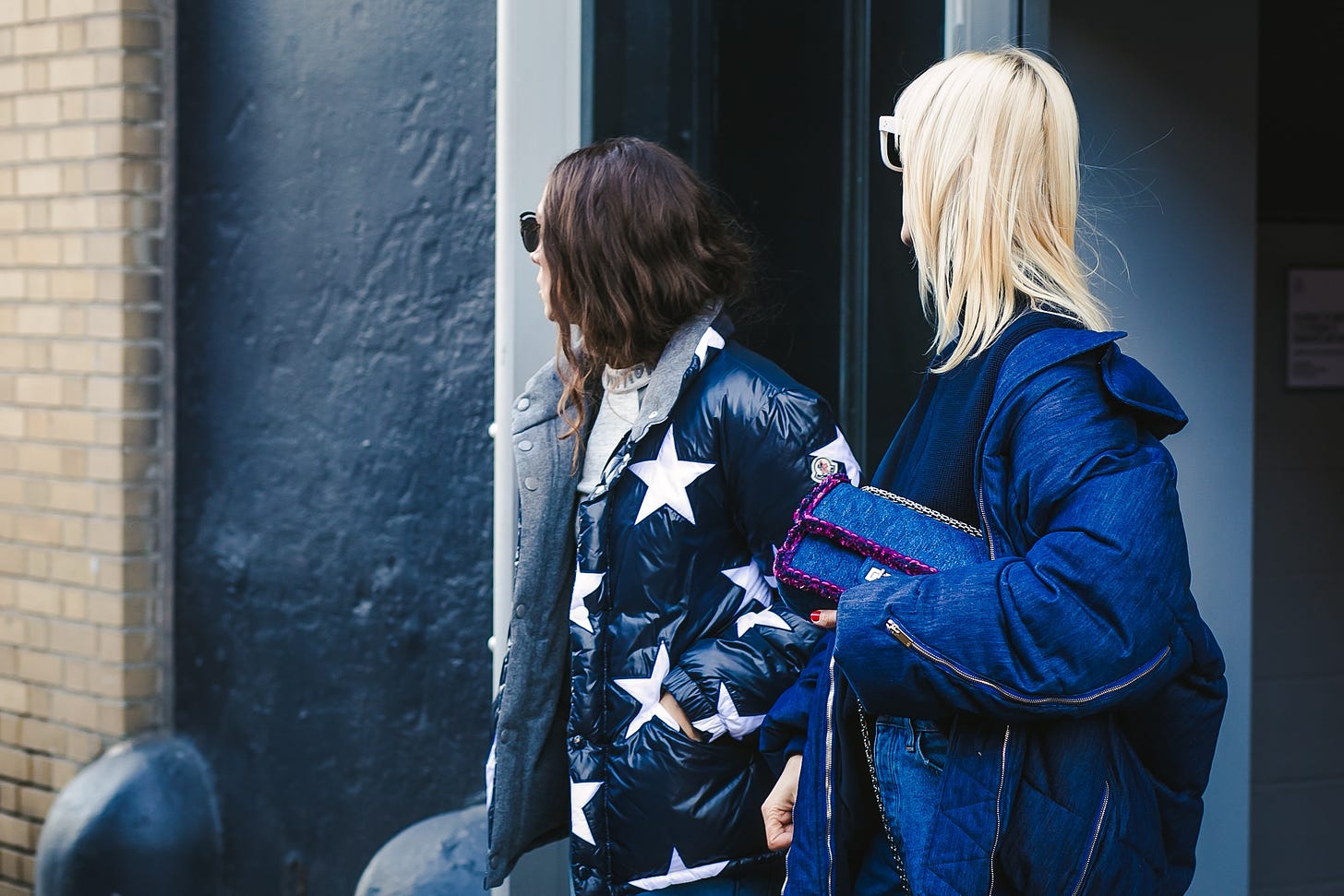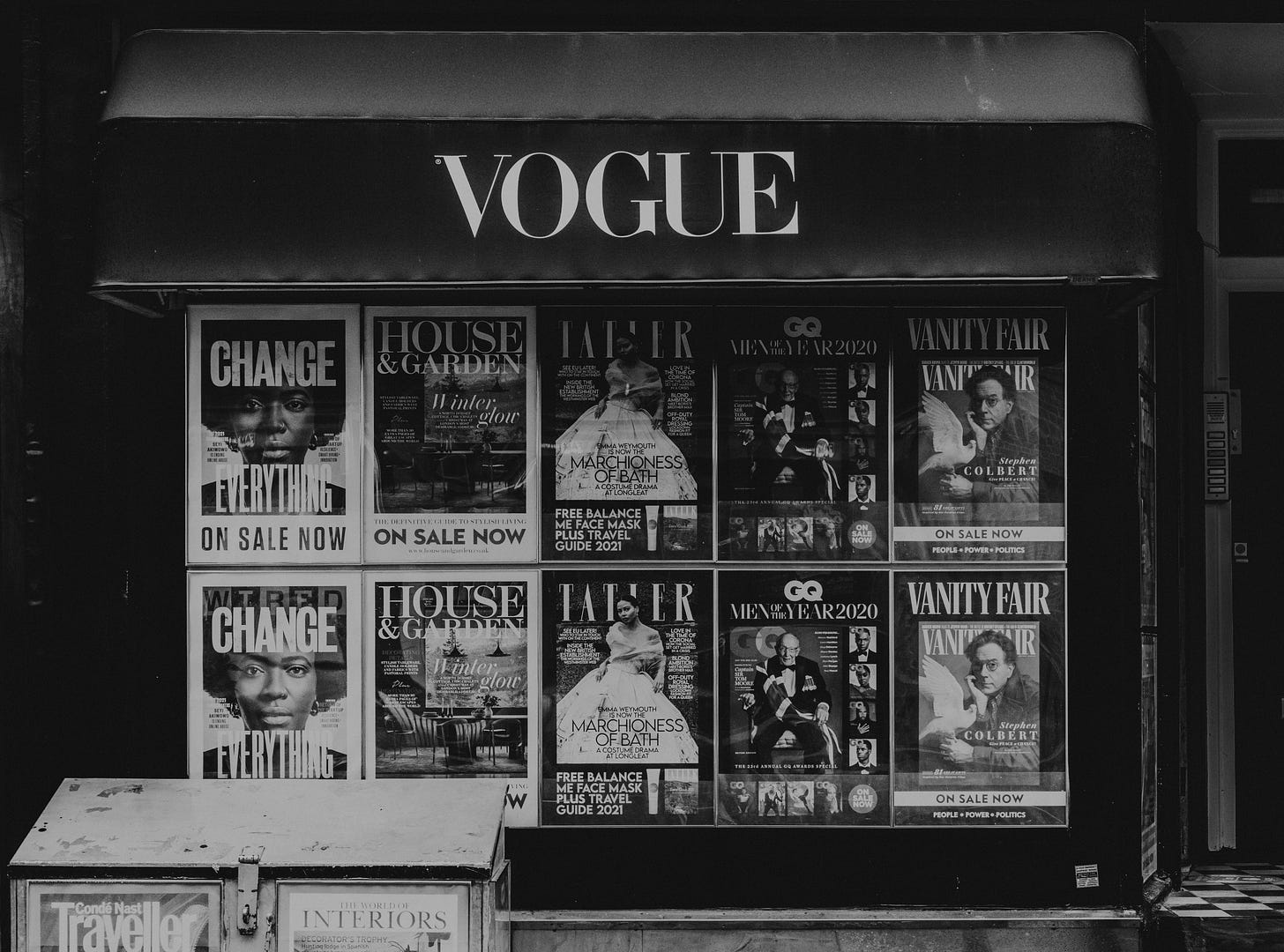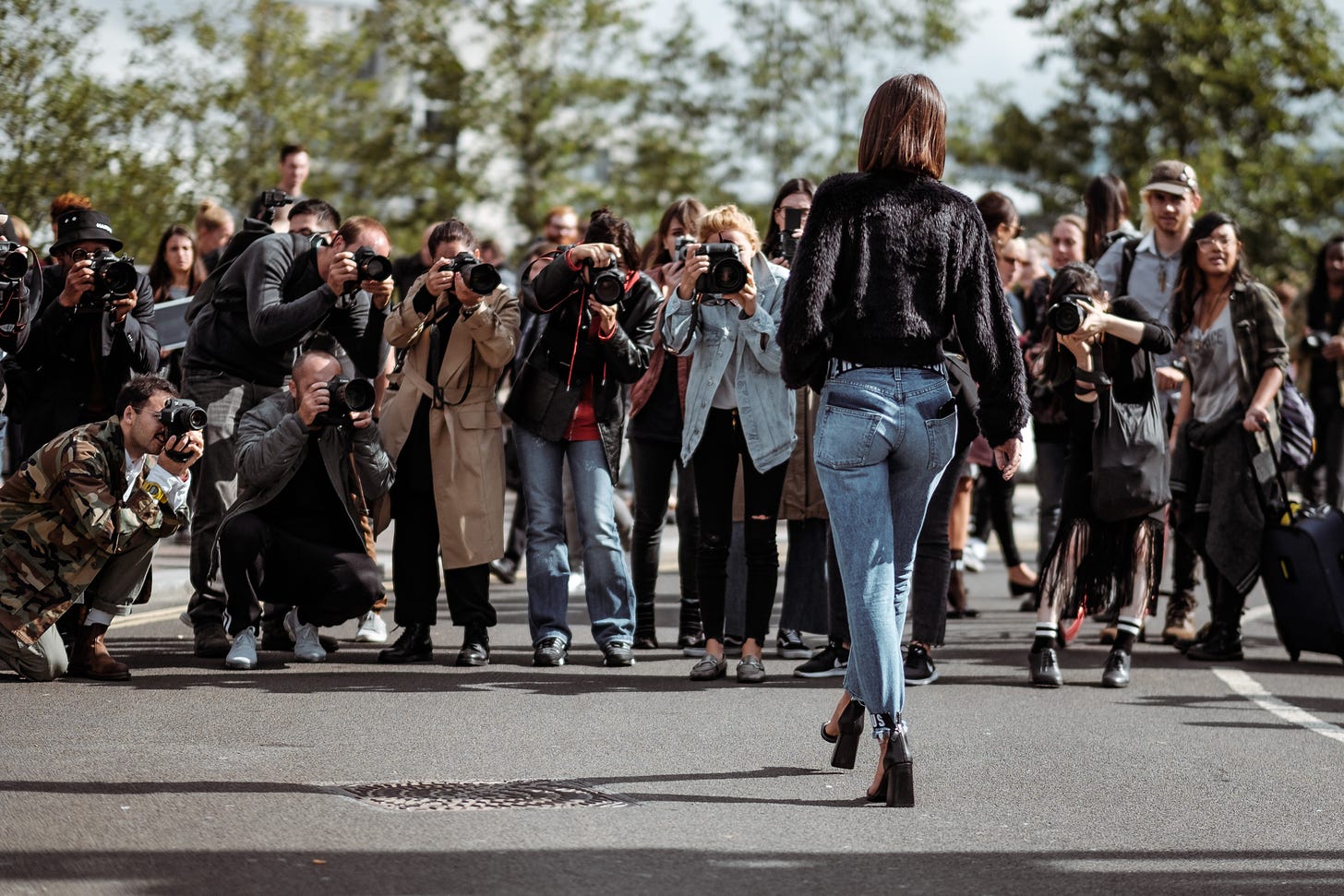
Every year, during the months of February and September, NYC streets are flooded with a concentration of the most beautiful outfits, accessories, and expressions of style through fashion. If you’re a fan of street style, like I am, you know exactly what I’m referring to. NYFW.
As NYFW becomes more accessible to content creators, the exposure through blog, magazine, and news features has significantly increased. What does that mean for photographers, creatives, and journalists?
What happens if someone publishes your photo without consent? Is it just free game when walking around outside a fashion show venue? There are a lot of questions here. Some are answered on a case-to-case basis, and some are universally applicable. With the next NYFW just five months away and Paris Fashion Week happening as we speak, I’m going to make sure you’re equipped with the basics you need to protect your image.
Let’s start with the basics. What is intellectual property? I’ve prepared this video where I share an IP crash course. If you fast forward to minute 5:56, you can listen to a brief breakdown of what Intellectual Property, or IP, is.
For those that prefer to read, here it is - and this is important. Copyright law states that the minute a “work” is created - meaning the minute a photographer clicks the shutter button on the camera - that person is deemed the copyright owner of that work. Having that title gets you certain important protections, but not all. You will need to officially register with the copyright office for additional protection. I’ll talk a little more about that below.
Let’s pause for a second. The above was a mouthful and, at first glance, may even seem difficult to understand. So, up until this point, what does this all mean? If you’re a content creator hiring a photographer to take your photo during NYFW (or any other instance), your photographer owns the rights.
“But I paid for the service. Don’t I own the rights to the images?”
Unless an agreement says otherwise, you don’t own your images. We see that in instances where all parties agree and state something like “Photographer is transferring all ownership rights of the deliverables/images/etc to the client.” In this case, even if the photographer created the image, the ownership of the image is transferred to another party (person), and they will be listed as the official copyright owner. This isn’t an option that works for everyone. Another option would be licensing the rights to use the images for a limited time, for a specific purpose, and in specific mediums.
In the event that someone wants to use an image that is protected, the rule of thumb here is permission + attribution. I know I promised no “legalese,” but hang in there for a moment; we’re almost there! Basically, the way this works is if you are not the valid copyright owner of the copyrighted work/image, the ONLY way you can use it is if you have permission from the owner. You can obtain this via a license agreement or another similar document.

You’ve just learned about this. Your mind is blown. You might even be worried. Let’s take a step back while I offer some solutions to common issues I’ve seen surrounding this topic.
“What do I do if my photo gets published without my permission?”
First and foremost, take a beat. Do not reach out to the Panther Party until you gather all your “evidence” of said use. Remember, linked content can be changed anytime, so you shouldn’t rely on that alone. As soon as you are made aware of the post or publication, take screenshots, download PDF versions of the articles (learn how to do this here), and all other tangible proof of improper photo usage.
If you get to the point where hiring an attorney makes sense, you can hire an attorney and file for copyright protection. This is useful if you don’t already have one and if time allows. What this means is if it can wait, you would file for expedited copyright protection before sending the other party a cease and desist. If it’s time-sensitive and you need to reach out sooner because not doing so would cause further harm, you can file later. For example, you need to stop them from using your image on something that’s about to go to print. When we serve a Cease and Desist, we are asking the publisher, platform, or outlet to remove the content that was posted without permission or give you credit.
Your attorney can also ask for appropriate licensing fees and negotiate a license deal on your behalf for the use of your image. Here, I’d essentially ask them to run you your money. If the image(s) is copyrighted, some damages can be pursued and even attorney fees awarded. I cannot stress this enough. Copyright Registration is EVERYTHING.
Lastly, we have the route that does not include an attorney. You can reach out to the infringer (violator of the copyright law), and you can also file your own copyright application. You’re also welcome to ask for a license fee, but if I’m going to be honest, success here is highly unlikely without an attorney assessing whether the situation would call for something like this.
“What happens if I sell an image I didn’t take to a brand or publication?”
You could be looking at a huge issue here. As I mentioned above, in order to be able to use/sell/distribute an image, you HAVE to be the copyright owner OR have permission from the owner. This is not only applicable during Fashion Week, but I have seen this issue often arise when content creators are working with brands that require them to sign over rights to the deliverables they agree to. If you don’t have these and sell an image owned by a third party, you could find yourself in the cease and desist nightmare mentioned above. The copyright owner can pursue or “come after you” for legal fees, licensing fees, etc.
Some companies we like to call “Copyright Trolls” make a living by scouring the internet for infringing (actively breaking the laws of an agreement) images that are used. Their job is basically to rat you out. They reach out to the photographer and say, “Hey, we noticed your image is being used online. Did you give this person permission? If you didn’t, we can sue them for you.” It’s wild, predatory, and oftentimes effective.

Let's make up a brief scenario for dramatic effect, mainly to drive this point home. I need you all to understand this.
Amanda hires a photographer to follow her around for NYFW. Amanda’s Fashion Week attire is sponsored by a brand we will call “X.” According to the agreement between X and Amanda, once the deliverables are sent to X, X owns the rights to the content. The agreement mentions whitelisting, advertising, print, and other forms of publication. Amanda signs the agreement, hires a professional photographer, and then delivers the content she agreed to to the brand.
Throughout this process, Amanda failed to mention her need for full rights to the work created by the photographer. The photographer then sees their images published on social media, in a print magazine, and several months later, in a billboard ad where X uses Amanda’s images to promote their new collection. Something the photographer and Amanda never agreed to.
So here we have a situation where the photographer can pursue legal action against Amanda. Aside from the obvious headache of having to sort this out legally, this would gravely affect her relationship with her photographer, X, and her image.
There are many different outcomes here, and I won’t get into all that today. But Amanda will either have to purchase the licensing fee from the photographer or if the photographer finds that they have a “legal leg to stand on,” they can pursue a much more extensive solution to this issue.
The moral of the story is that if you’re a service provider, have a service contract that clearly states copyright ownership. You can find my Photography or Video services agreement HERE. You can use the code SUBSTACK20 for a discount. Even if you are okay with signing over rights or allowing additional use of your works, make sure you have that documented on paper in full detail.
If you’re a content creator looking for a contract that you can offer a photographer or videographer, you’ll be happy to know I’m working on something to help you, More on that in a future post!
Thanks for reading! I hope that after taking all of this in, you feel empowered and prepared. Don’t forget to share and subscribe!



